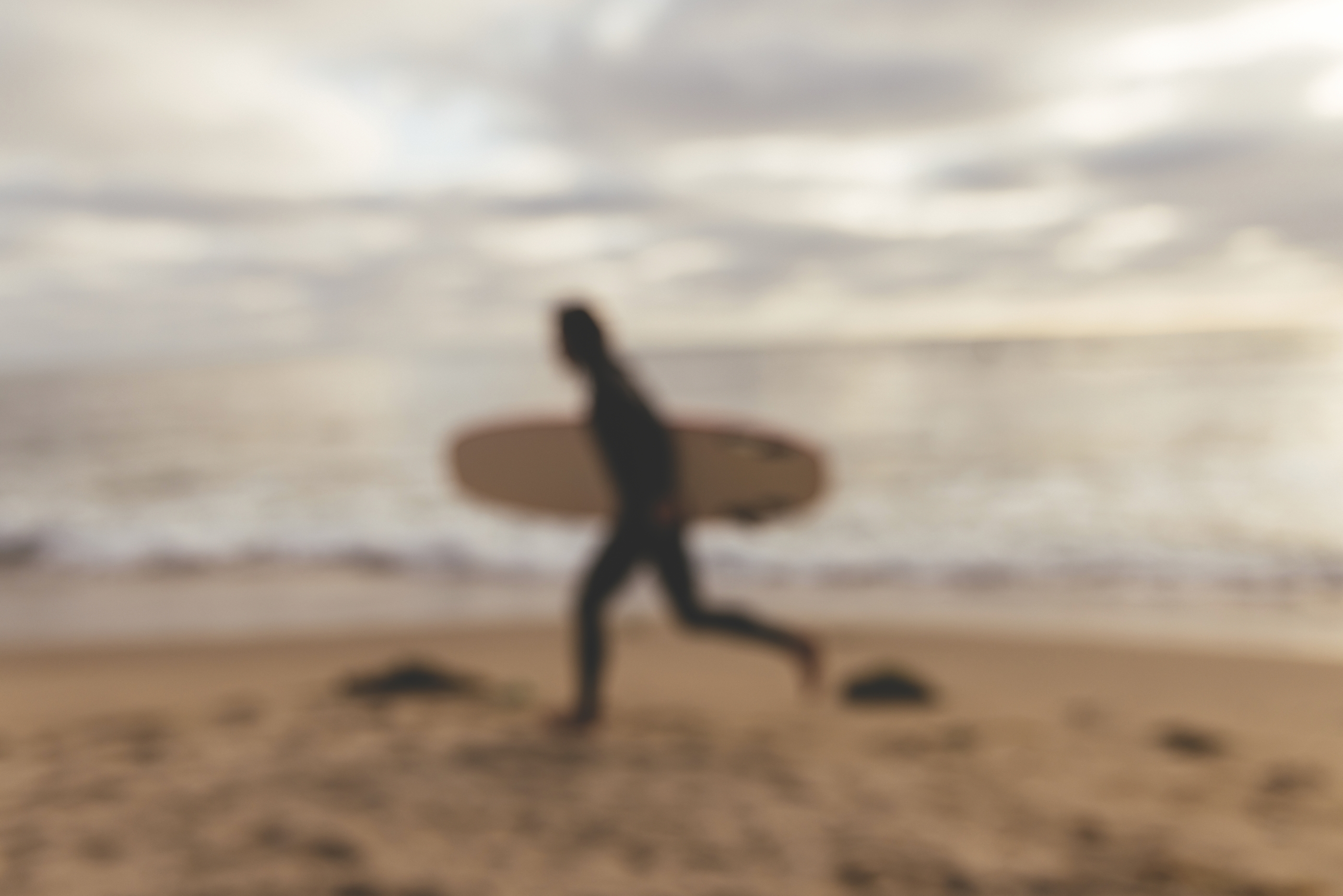Brenton Woo ’99 has developed a one-of-a-kind surfboard — now he's working to get it out into the world
Riding the Startup Wave
Brenton Woo ’99 has developed a one-of-a-kind surfboard — now he's working to get it out into the world
October 3, 2022
By
Tina Eshleman
Photography By
Stacy Keck
Catch a wave and you’re sittin’ on top of the world.
The exhilarating line from the 1963 Beach Boys song still resonates with Brenton Woo ’99, who would rather be in the ocean than almost anywhere else.
A surfer relies on skill and intuition to meet the wave at just the right moment, speed and angle, and maintain the balance necessary to ride it to shore. But there are also variables beyond an individual’s control, including wind strength and wave size and frequency.
In a similar way, a startup business requires the spark of an idea and the passion to move it forward. It also needs funding and partners who can help transform a vision into reality. But multiple factors can affect whether the business succeeds, among them timing, customer response and economic growth or decline.
For both scenarios, a person needs patience, creativity and boldness to respond to changing conditions. It is estimated that surfers only spend about 10% of their time in the water riding waves, with the rest spent paddling or floating. And while the rewards can be substantial, launching a startup is a daunting endeavor — nine out of 10 startups don’t make it. With odds like that, why do it? Why even try?
The reason in Woo’s case is that he believes he has created a product with the potential to improve the experience of surfing. He says his San Diego-based company, Moda Surfboards, makes the world’s first high-performance soft surfboards. Less expensive and more environmentally friendly than traditional fiberglass boards, Moda’s patented boards incorporate an internal wooden core that makes them more stable and more controllable than conventional soft foam surfboards, he says. He describes the boards as accessible for beginners without sacrificing the performance sought by experienced surfers.
“Surfing is fun,” he says. “You’re active, you’re outdoors. You’re in tune with the environment. It feels good. Why wouldn’t I want to share that with everyone? If my technology can make it more fun for more people, why not bring it out? That’s what compels me to keep going forward.”
Woo’s story is one of a startup in progress. It’s one in which the ending has not yet been written. Here’s how it begins.
PART I: PADDLING OUT
The oldest of three children born to Chinese and Vietnamese parents in Northern Virginia, Woo planned to major in government at William & Mary and work in the Washington, D.C., area after graduating — perhaps following in the footsteps of his mother, who holds a doctorate in economics and worked for the International Monetary Fund for a time.
“I was more interested in the philosophical aspect of government, rather than the policymaking part,” Woo says. “William & Mary helped me see many different kinds of thinking, and that allowed me to change and grow while I was there.”
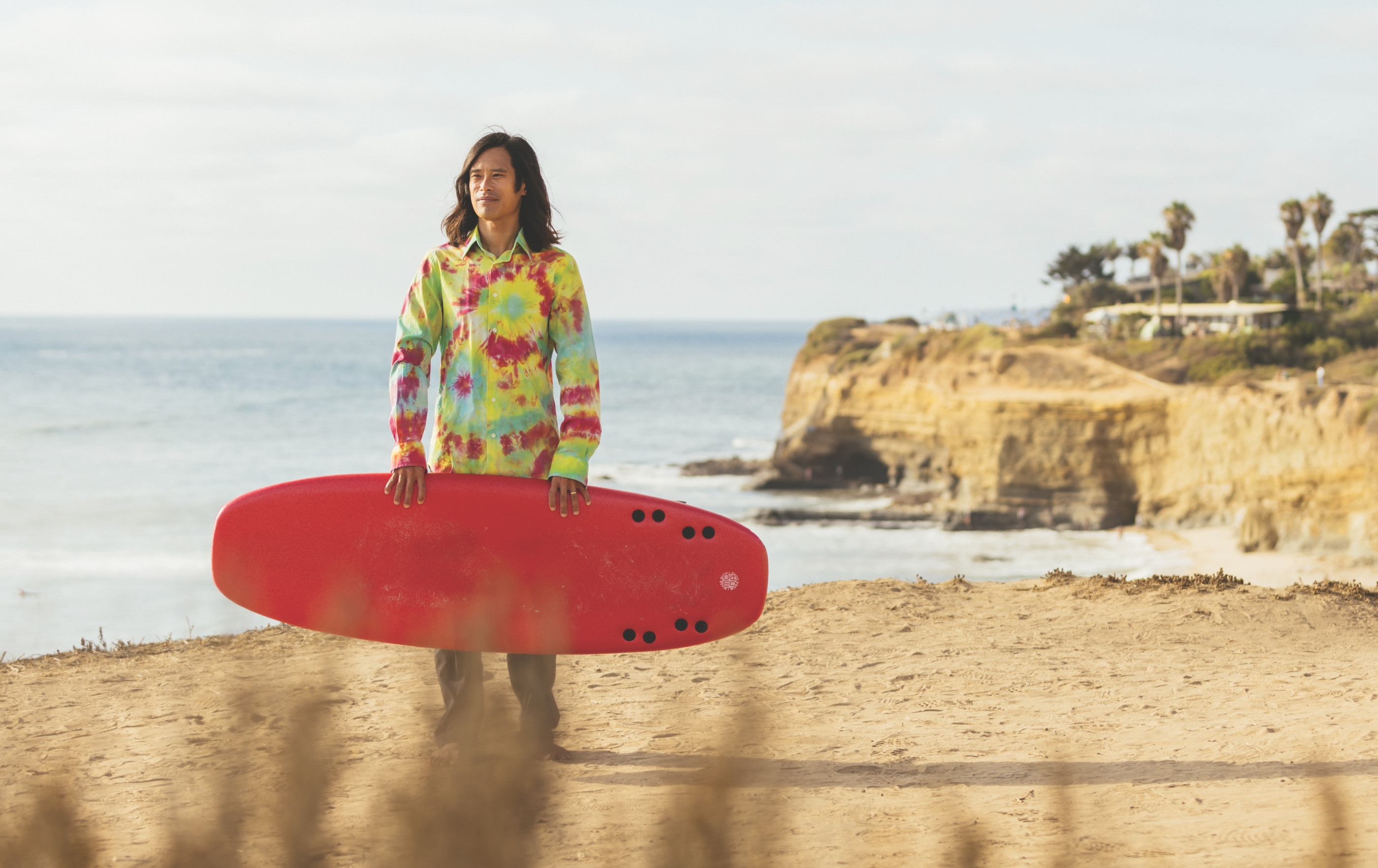
After completing requirements for his major, he began exploring other interests during his junior and senior years, signing up for electives such as music, film, rock climbing and scuba diving.
“I didn’t get the best grades at W&M, and that’s not because I didn’t find classes interesting or didn’t learn anything,” Woo says. “The classroom is not my ideal learning environment, and it took me a while to understand that. Experiential learning works best for me.”
During the summer of 1997, one of his friends at W&M, Paul Tumeh ’00, introduced him to surfing and bodyboarding at Virginia Beach, opening a window into a different way of life. Woo spent the next summer in Hawaii honing his surfing skills.
“I heard there were people who travel the world surfing — people who follow their bliss, who are doing first what they like to do, and making money is secondary,” he says. “I thought, ‘What is this life? Can I do that? I’d much rather be wearing swim trunks than a suit. I’d rather my ceiling be the sky than an office.’”
Woo began an odyssey that took him around the country and the world in search of great places to surf in the summer and snowboard in the winter, gaining exposure to diverse cultures and people who, like himself, did not pursue a conventional career. He drew on his experience working part time as a cook at a Japanese teppanyaki restaurant in Williamsburg to find jobs at restaurants and resorts. Woo spent time in Breckenridge, Colorado, and Lake Tahoe in the Sierra Nevada Mountains as well as in Australia, Indonesia, Japan, Norway and Finland.
He describes surfing not only as a sport but also as a path, one that can feel like a perpetual Christmas Eve: “Surfing is always something to look forward to, and you never get your fill. I’m an early riser because I want to know what the waves are doing, first thing. I don’t know any other activity except for hang gliding where you are literally just riding earth energy. It’s a uniquely satisfying feeling.”
PART II: SURFIN’ SAFARI
As he traveled, Woo met likeminded people and came to see an expanded future for himself beyond surfing, snowboarding and cooking. He identified with founders — people who feel compelled to start a business that fills a need or develop a product that solves a problem. As he defines the role, a founder is someone who has an idea and acts on it.
While living in Truckee, California, near Lake Tahoe, he spent much of his free time in the mountains snowboarding. Not happy with the snowboards available on the market, he decided to create his own.
“There wasn’t a brand that I felt represented the core values of snowboarding,” he says. “Skiing is faster and more practical, but there’s one thing snowboarding does better and that’s the freestyle approach to snow, which often means tricks — jumps and rails.”
While other brands catered to a broad audience, Woo wanted to make something that appealed to the kind of snowboarders who build their lives around the sport.
“It’s a very small population, but arguably within snowboarding, they’re moving the culture forward because without them snowboarding isn’t cool,” he says. “If snowboarding’s not cool, no one’s buying snowboards.”
Woo started Automaton Snowboard Co. in 2004 with his own savings of $3,000. He incorporated graphic designs by local artists and began selling snowboards from the back of his truck, eventually gaining distribution in Japan, South Korea, Europe and Russia. He enlisted fellow snowboarders who liked his boards to help spread the word.
Despite some initial success and positive feedback from snowboarders, Woo pulled the plug on Automaton in 2012 and liquidated his remaining inventory and equipment. Among the reasons were several seasons in which snowfall was not optimal for board sales and snow sports. According to the journal Geophysical Research Letters, because of climate change, the average snow season has shrunk by 34 days as the result of a 41% drop in the amount of snow in the western United States since the early 1980s.
Another factor was that the Austrian snowboard factory that produced Automaton boards shut down permanently.
“Automaton was an expensive lesson that my talent was not in building a brand,” he says. “Automaton was trying to create a compelling brand. It was cool enough that it was a rolling business for eight years, but it didn’t make the impact I wanted it to make. My talent is in solving unstructured problems — the kind with few parameters other than where you are now and what your goal is, and there aren’t established procedures on how to get there.”
Before closing Automaton, however, Woo was already working on his next venture.
PART III: DROPPING IN
“I had spent time in Austria learning how snowboards are built and how their flexibility works mechanically, and I took that experience and that knowledge and rolled it into Moda,” he says. “I applied snowboard technology to surfboards.”
Woo sees conventional fiberglass surfboards as too rigid: “When you’re using them in a dynamic environment that’s constantly changing, like a wave face, a static shape is not always the optimal shape,” he says. “A flexible surfboard can adapt its shape in real time with the changing wave face.”
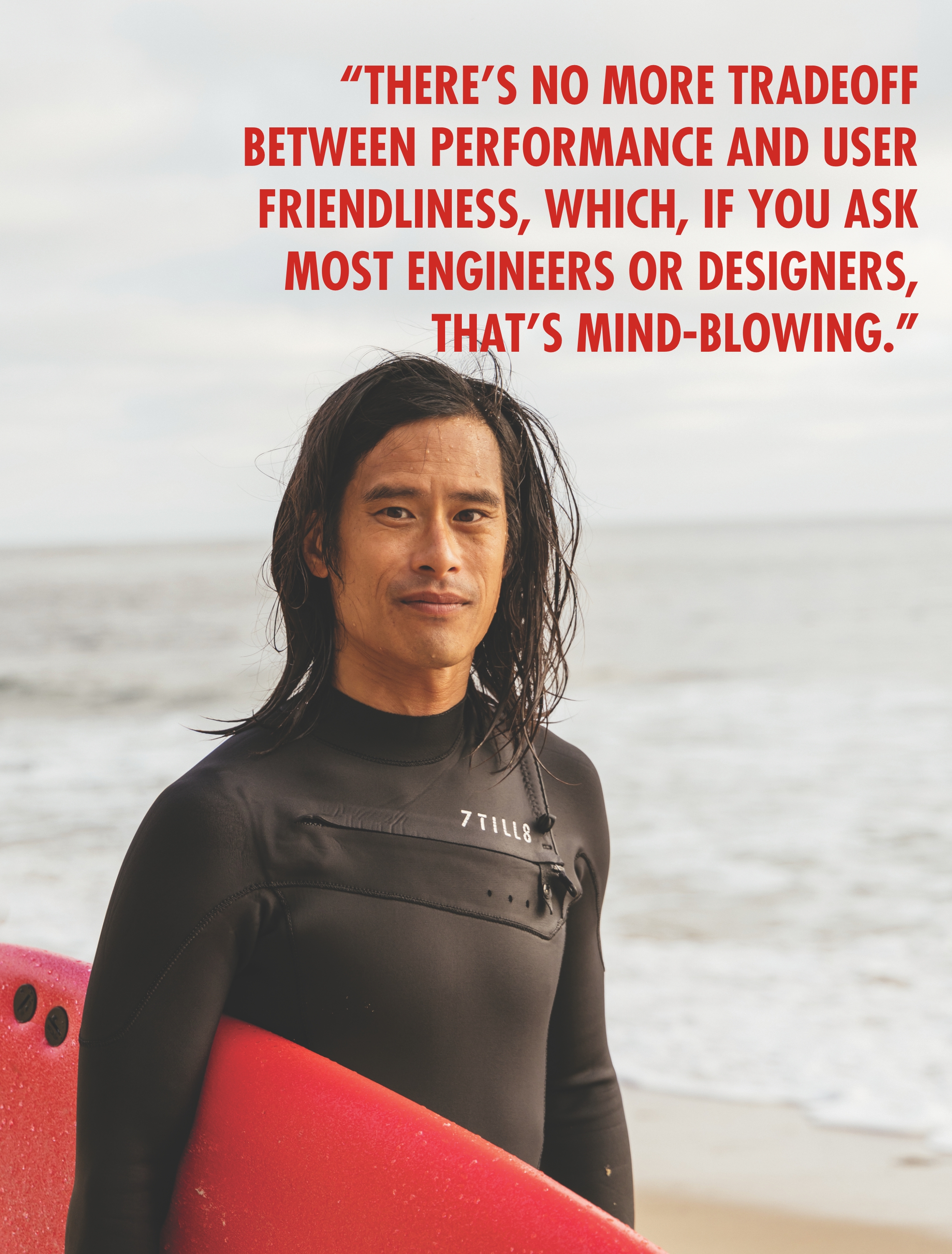
On the other end of the spectrum are soft surfboards. They are popular with beginning surfers, but Woo sees them as too floppy: “They typically twist and plow in ways that kill your speed.”
His concept for Moda Surfboards is to increase the performance potential of soft surfboards by controlling their flexibility in the same way snowboards do.
“So all of a sudden, we have user-friendly soft surfboards that have the full performance of fiberglass boards,” he says. “There’s no more tradeoff between performance and user friendliness, which, if you ask most engineers or designers, that’s mind-blowing. In anything else — computers, cars, clothes — you trade off performance for user friendliness.”
Still, it’s a tough sell, he acknowledges, because people tend to stick with what they know.
“I’m fighting an uphill battle in that people don’t necessarily see the need for a change in surfboards,” he says, “but I think it’s necessary and I feel compelled to bring it about.”
He recalls that it seemed unthinkable before 2007 that there would be telephones without buttons.
“Now we all have telephones with no buttons,” he says, holding up his cell phone. “But before it became the standard, a lot of people — including some in the tech industry — publicly laughed at it.”
Woo began developing the idea for Moda Surfboards in 2009, and officially launched the company in 2016, the same year he and his wife, Kathryn Johnston-Woo, were married. He received a patent in 2019. Rather than producing and marketing his own surfboards, he wanted to position Moda to supply his technology to surfboard companies in the way that Intel supplies computer chips to companies that make personal computers.
Surfboard companies were slow to respond, so in the summer of 2017, Woo started holding workshops that allowed surfers to make their own boards using his model, to demonstrate its appeal. Somewhat to his surprise, the workshops sold out.
“They’d spend a Saturday morning making it and then I’d finish it off for them, and give it back to them in a week, and our summer was booked,” he says.
The workshops helped surfboard companies see that if customers were willing to buy DIY boards using Moda’s prototype, they might be willing to buy professionally made boards.
“We had our first customer in 2018 — Infinity Surfboards in Dana Point, California,” Woo says. “They started making Moda Surfboards based on my technology — their logo, their branding, their store, their customer.”
PART IV: IN THE SOUP
Dave Boehne, CEO of Infinity Surfboard Co., says his 50-yearold, family-owned company is known for taking on outside-the-box projects, such as making giant paddleboards or adaptive boards for athletes with disabilities. So when Woo walked into the company’s shop one day with a new type of surfboard, Boehne was intrigued.
“He came from board sports and a key feature in snowboards is flex,” Boehne says. “I snowboard as well, so I understood where he was coming from. I knew I could help him right away. I thought there’s something there, if we could work on a better shape.”
What appealed to Boehne was the idea of a wooden core — or stringer — that offers a surfer both flexibility and control. Woo left a surfboard for him to try.
“In theory, it’s an adaptable board for any kind of wave,” Boehne says. It remains flat in a small wave, but as a wave curls, the board adapts with the weight of the rider slipping into the curve, he adds. “So that’s what got me excited — the fact that it’s an on-demand tuning board, almost like a shock absorber in a car.”
Boehne worked with Woo on adjusting the design. He thought the first prototype was a little too flexible and needed to be a bit stiffer. They gave the boards a sleeker, more classic, curved surfboard shape.
“It took us about five prototypes to where I felt I could be stoked to sell them,” Boehne says.
Like Woo, he saw a challenge in persuading people to try a new product. And while at $350 to $400 each, the Moda prototype board is less expensive than the typical fiberglass surfboard Infinity sells, it costs about twice as much as the most popular soft surfboards on the market.
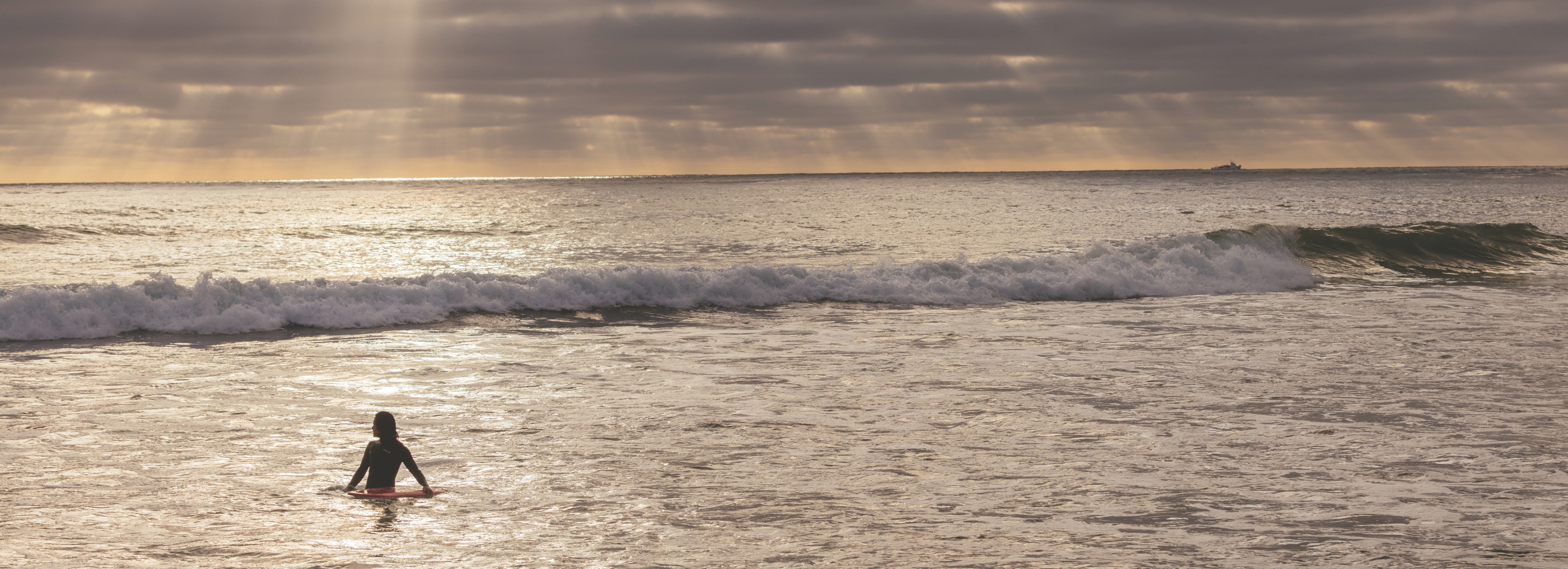
Describing his own experience with the boards, Boehne says, “When I had the timing right, there were moments when I’d come out of a turn and it felt like someone pushed you. There were bursts of speed and you don’t get that in a normal surfboard.”
Around the time that Woo began generating interest from companies such as Infinity, his wife, then an ensign with the U.S. Navy Nurse Corps, was assigned to Fort Belvoir Community Hospital in Northern Virginia and the couple moved to the East Coast.
Woo commuted between California and Virginia to keep Moda going, but he found it challenging to run the fledgling business from across the country. Infinity sold a couple dozen of the boards he and Boehne had prototyped, but the project fizzled out as the effects of the pandemic set in during 2020.
“The manufacturing facility I was using shut their doors permanently,” Woo says. “One of the foam suppliers I used shut down.”
For a business trying to get off the ground, these were devastating developments.
“As a startup, factories and suppliers typically don’t want to work with you until you meet their minimum volumes,” he says. “If your volume is not high enough, they don’t want to talk to you. I was lucky enough to find material suppliers and a factory willing to work with me as a startup and unfortunately the pandemic put them out of business.”
In 2021, the Navy assigned Johnston-Woo, now a lieutenant junior grade, to Naval Medical Center San Diego and the couple moved back to the West Coast with their baby daughter, Louisa. Brenton Woo tried to revive the partnership with Infinity, but by this time, the surfboard company was consumed with managing increased demand for products, complicated by a severely disrupted supply system.
For his part, Boehne is willing to give Moda Surfboards another shot, but he believes that for them to gain a lasting foothold, more prototyping and market testing are needed.
That brings up another hurdle, says Gary Hammerslag, a Colorado-based medical technology and athletics product entrepreneur who has been a mentor for Woo and has invested in earlier prototyping.
“His biggest challenge, in my view, is the ability just to produce product after product, which requires capital and equipment,” Hammerslag says. “It’s hard to do low-volume production if it’s not something you can do in your shop or garage.”
Getting the surfboards into more people’s hands could lead to additional development and sales, he adds.
“It’s a pretty advanced concept, and it could go a long way once there’s an ability to produce them and experiment with different shapes and sizes,” Hammerslag says. “What interested me is it could really change the paradigm. I give him credit for the vision to see where it could go and trying to get it there, step by step.”
PART V: PRAY FOR SURF
While working to rebuild his business, Woo continues to spend as much time as he can in the water. As a surfer, he is always mindful of the weather.
“I take cues wherever I am, so it’s always occupying some space in my mind, like is that tree blowing? If it’s blowing, it might be too windy,” he says. “Is it blowing in the right direction? What are the waves going to be like? What’s the tide doing right now? What’s the swell direction?”
He started recording observations of conditions at the beach near his San Diego home more than a decade ago and became more diligent about doing it when he began testing surfboard prototypes for Moda in 2015.
“There’s a narrow band of surf conditions that are optimal for testing surfboards. You want conditions that are just under perfect,” he says. “Perfect conditions are not ideal to test products because you can’t learn from them. Everything works great when the waves are perfect. You want waves that are good enough to surf, but just bad enough that you need to work the board and wave to keep going. Because then you can learn how to improve the board design.”
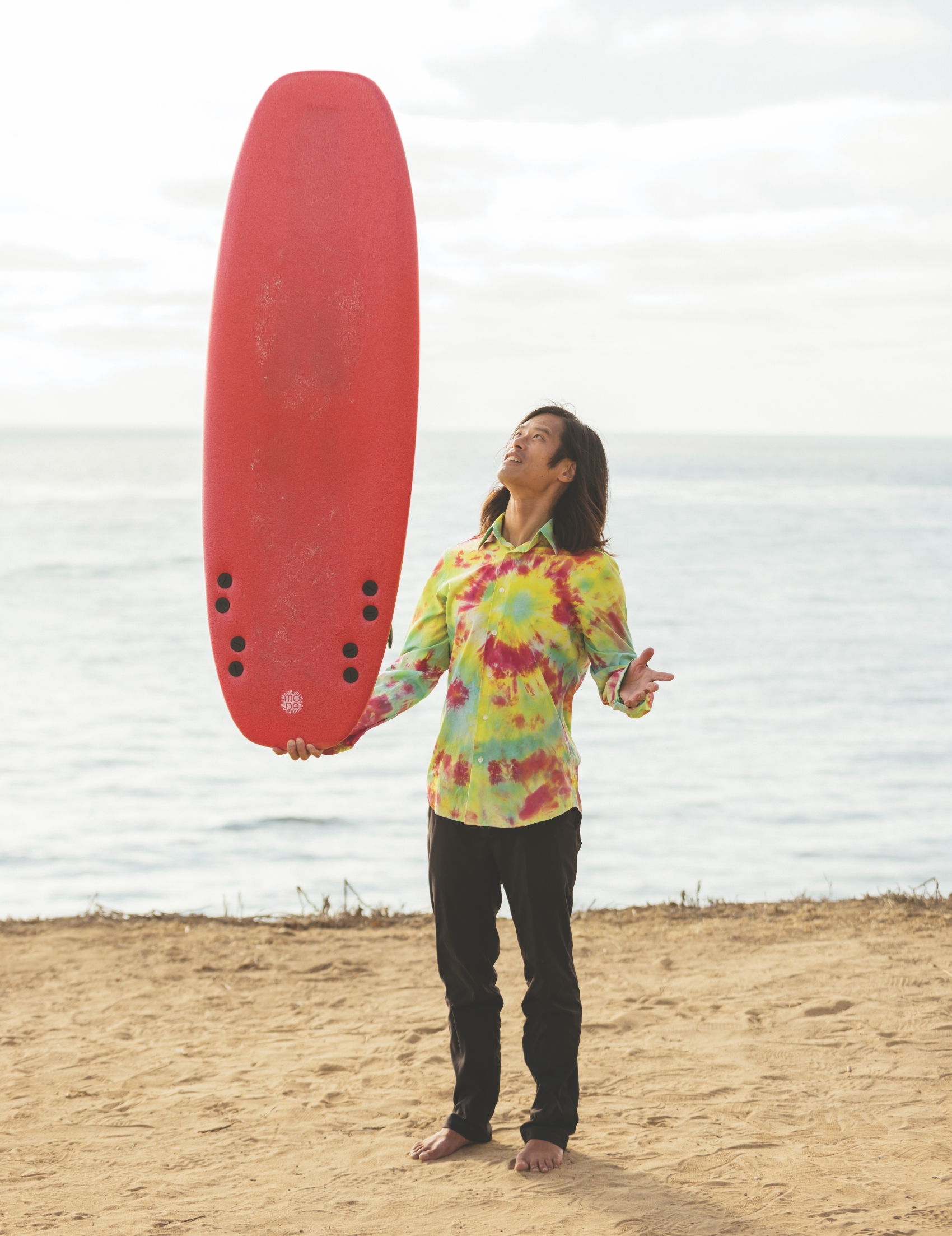
In his observations, Woo has seen dramatic changes in the ocean. He points to the day after Thanksgiving in 2015 as a turning point.
“Before Black Friday 2015, local surf conditions were like a sheet of glass. Waves came in sets, there were calm lulls between the sets and you could paddle out with dry hair,” he says. “After Black Friday 2015, the ocean was constantly stormy. The surface was choppy. The water wasn’t as clear. There weren’t lulls between sets. It was just constant motion.”
Temperatures were less predictable, too: “There was no rhyme or reason. One year, the water temperature was so warm that the kelp beds didn’t properly grow. Kelp beds help keep the ocean surface glassy and that wasn’t happening,” he says. “Then, all of a sudden, one year the ocean was too cold and now there’s too much kelp and paddling out feels like climbing a tree or crawling on your lawn. Before 2015, I saw dolphins nearly every time I surfed — 9 1/2 times out of 10. This year, I’ve seen dolphins less than five times.”
Being in close contact with nature gives him a better appreciation of it, which is one reason why it’s important to him to make surfboards that are as environmentally responsible as possible. Healthy surf conditions are vital for the future of his business, too.
Fiberglass surfboards, considered the standard, are made of polyurethane or expanded polystyrene foam, wrapped in fiberglass cloth and sealed with epoxy resin, and the fins are molded plastic, often reinforced with fiberglass, Woo says.
“No part of fiberglass surfboard construction ever breaks down to biologically benign components,” he says. “There’s a reason for this — biodegradable and organic materials are easily destroyed by marine environments. Artificial and toxic materials last much longer. Since this is the case, the best we can do to be environmentally responsible with surfboards is to recycle or upcycle the materials in used surf products.”
Moda’s boards, in contrast, use polyethylene or PE plastic — “easily the most recyclable plastic there is,” he says, adding that it uses less energy to make, is easily collectible and is not harmful for humans to come in contact with. “Food containers are made out of PE. Polyethelene is the most benign of all plastics to us.” Wood, which makes up the core of Moda boards, is a renewable resource.
Woo would like to see more efforts to preserve surfing areas and protect against industrial, commercial and residential development. For example, the nonprofit Surfrider Foundation has advocated for legislation to prevent construction of a toll road through San Onofre State Beach south of Los Angeles. A few William & Mary students have been involved in Surfrider’s conservation efforts as interns.
“Why not take our nonbiodegradable, nonreusable waste — such as concrete — and create artificial reefs?” he says. “They could mitigate beach erosion, provide habitats for sea life and promote good surf waves.”
Woo cites a project at Queensland’s Gold Coast in eastern Australia that created a world-class surf break by pumping sand to combat beach erosion, producing waves that can take surfers on mile-long rides.
William & Mary’s strategic Vision 2026 plan includes as one of its key pan-university initiatives finding innovative solutions to ensure the resilience of the world’s oceans, coasts and waterways. While Woo applauds his alma mater’s goal, he believes that for environmental solutions to be effective, they also need buy-in from the population at large.
“I think that, generally speaking, the way modern life has developed, most people aren’t connected with our natural environment in a way that fosters an appreciation and responsibility for it. Most people live in cities where bright lights mean we can’t see stars at night. We don’t often encounter animals in the wild. We don’t see the consequences of our actions, and it’s tough to address a larger problem if we don’t directly see it on a day-to-day basis.”
PART VI: SHOOT THE TUBE
As he charts a path forward, Woo is seeking new sources of materials for his surfboards and a manufacturer to produce them. He hopes to find a way to incorporate post-consumer or post-manufacturing materials — perhaps from a company that makes running shoes — in making surfboards.
“If we are able to use upcycled material in our surfboards, we’re giving nonbiodegradable material a second life,” he says. “It’s possible that they could be infinitely upcycled.”
As he contemplates the future of Moda Surfboards, Woo recalls Hammerslag asking him how much time he’s willing to devote to the venture.
“He said, ‘When is enough, enough?’” Woo says. “The founder in me wants to say it’s never enough.”
Thinking of his now 3-year-old daughter, he adds, “Traditionally, people say when you do things in life, you should make your parents proud. I say you should make your kids proud. My daughter will be on this planet long after I’m gone. She’s the one I need to make proud of me.”
Eventually, he hopes to pay it forward by helping another startup founder.
“If I can do for another founder what Gary is doing for me, that’s being successful,” he says. “If a founder sees my experience and thinks I may have something valuable to contribute, that’s when I’ll feel like I’ve reached success.”
